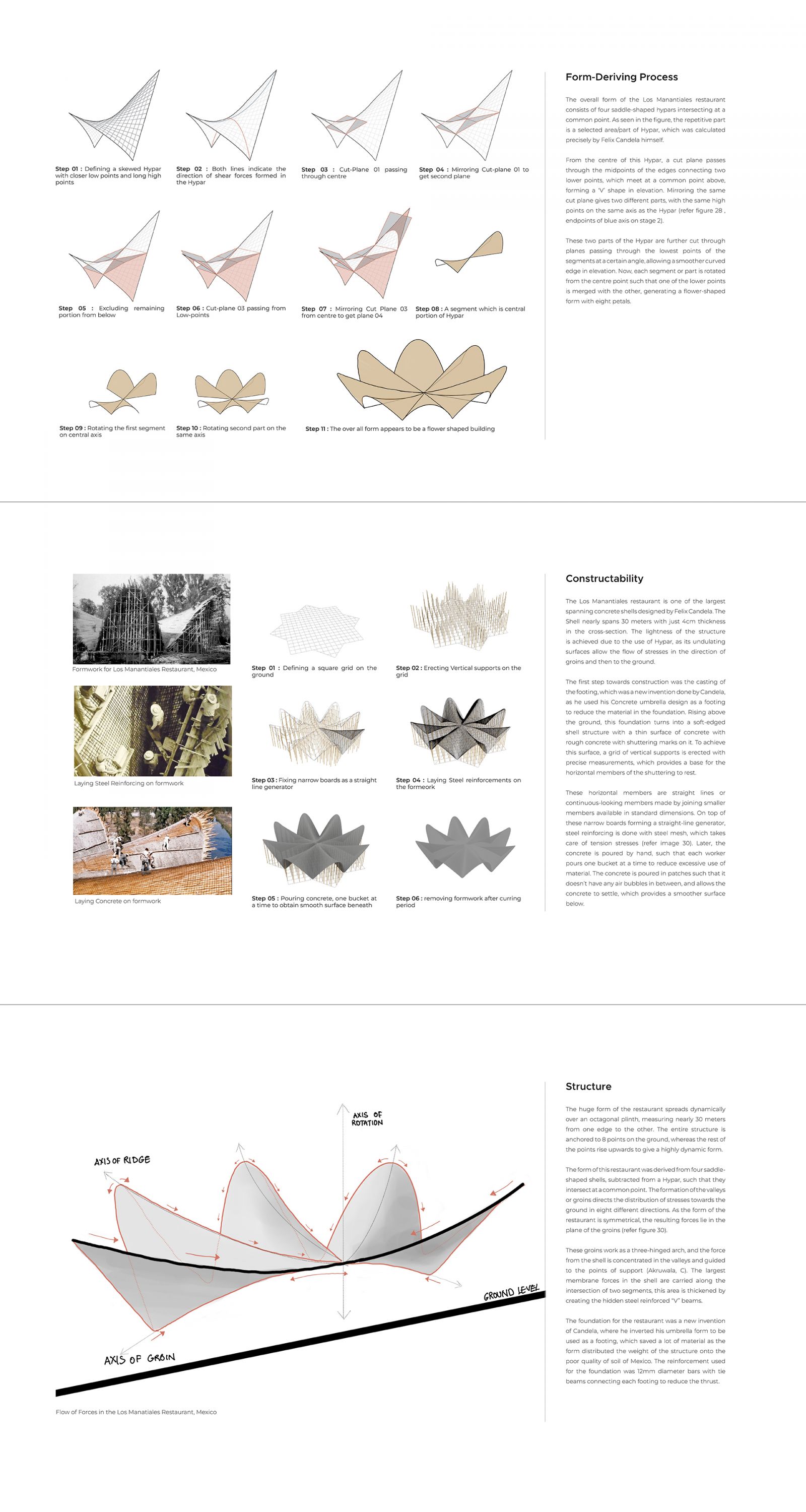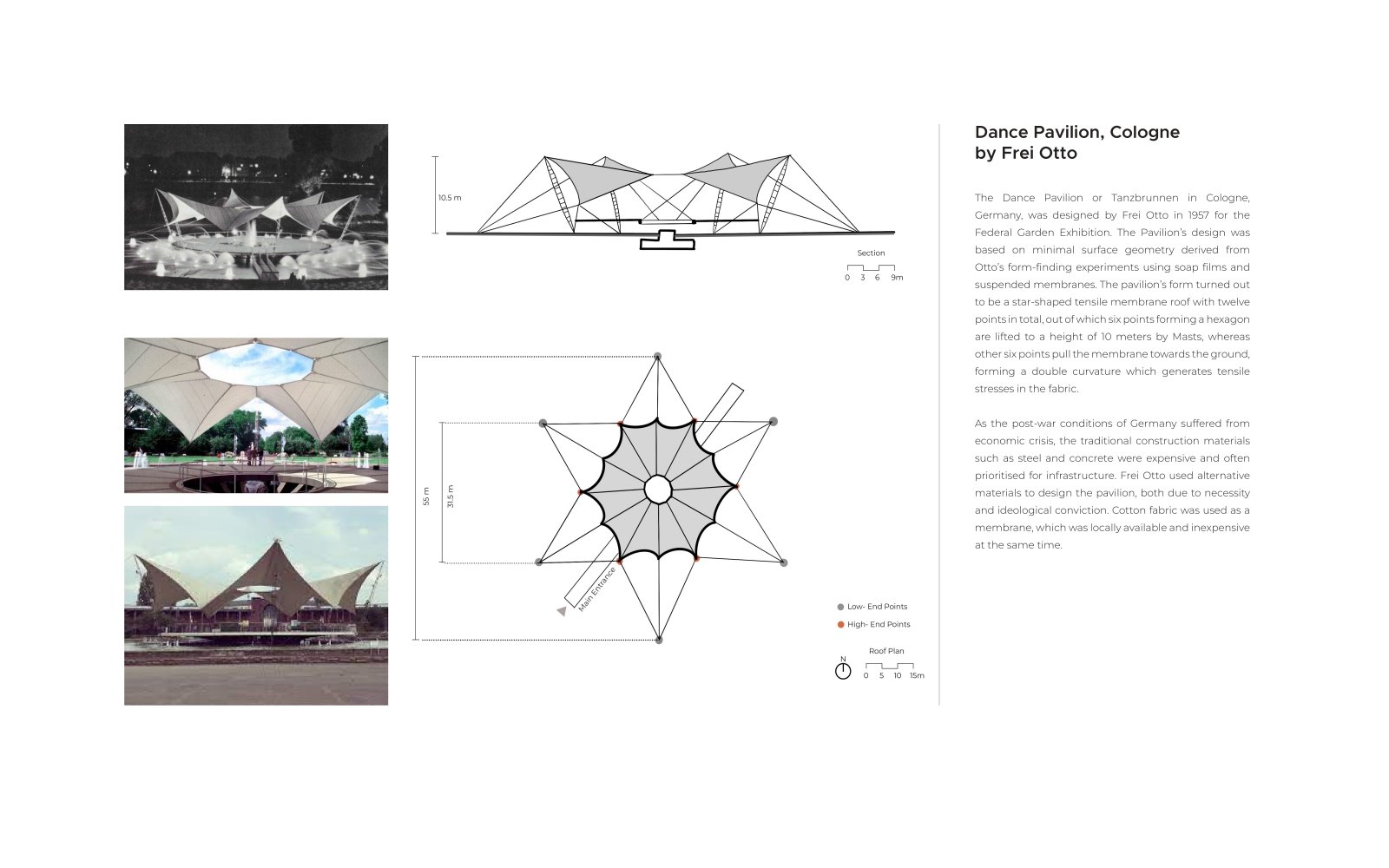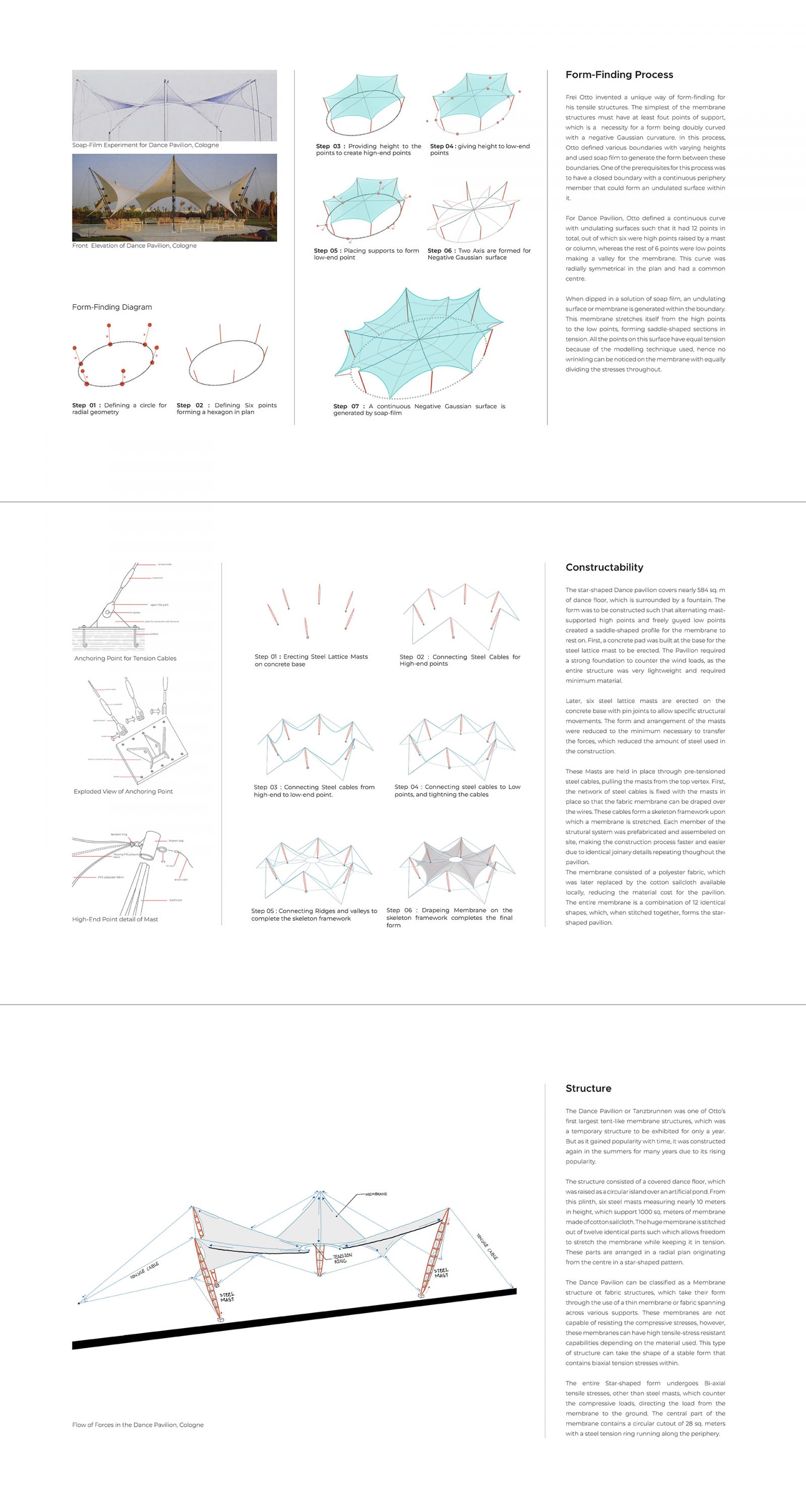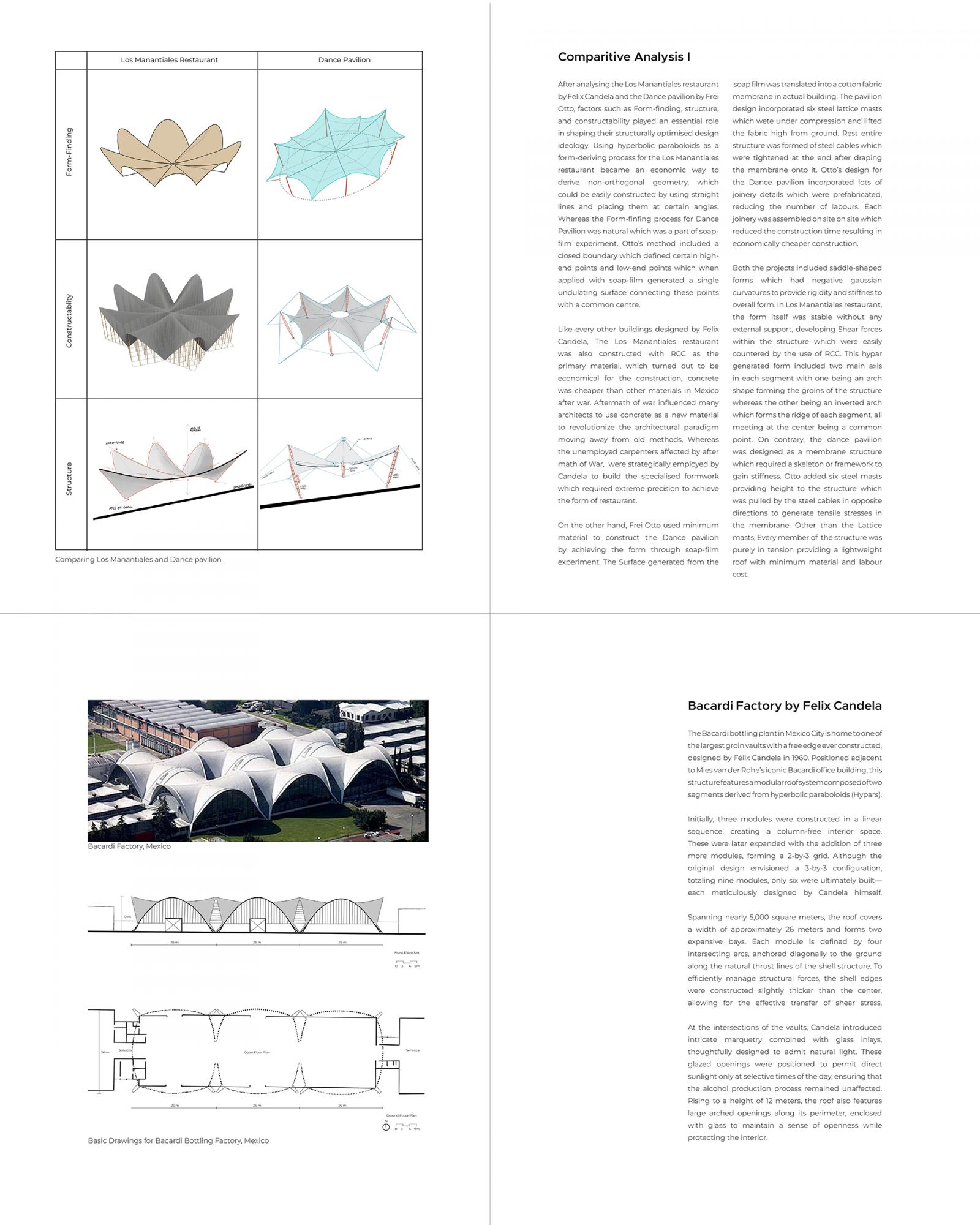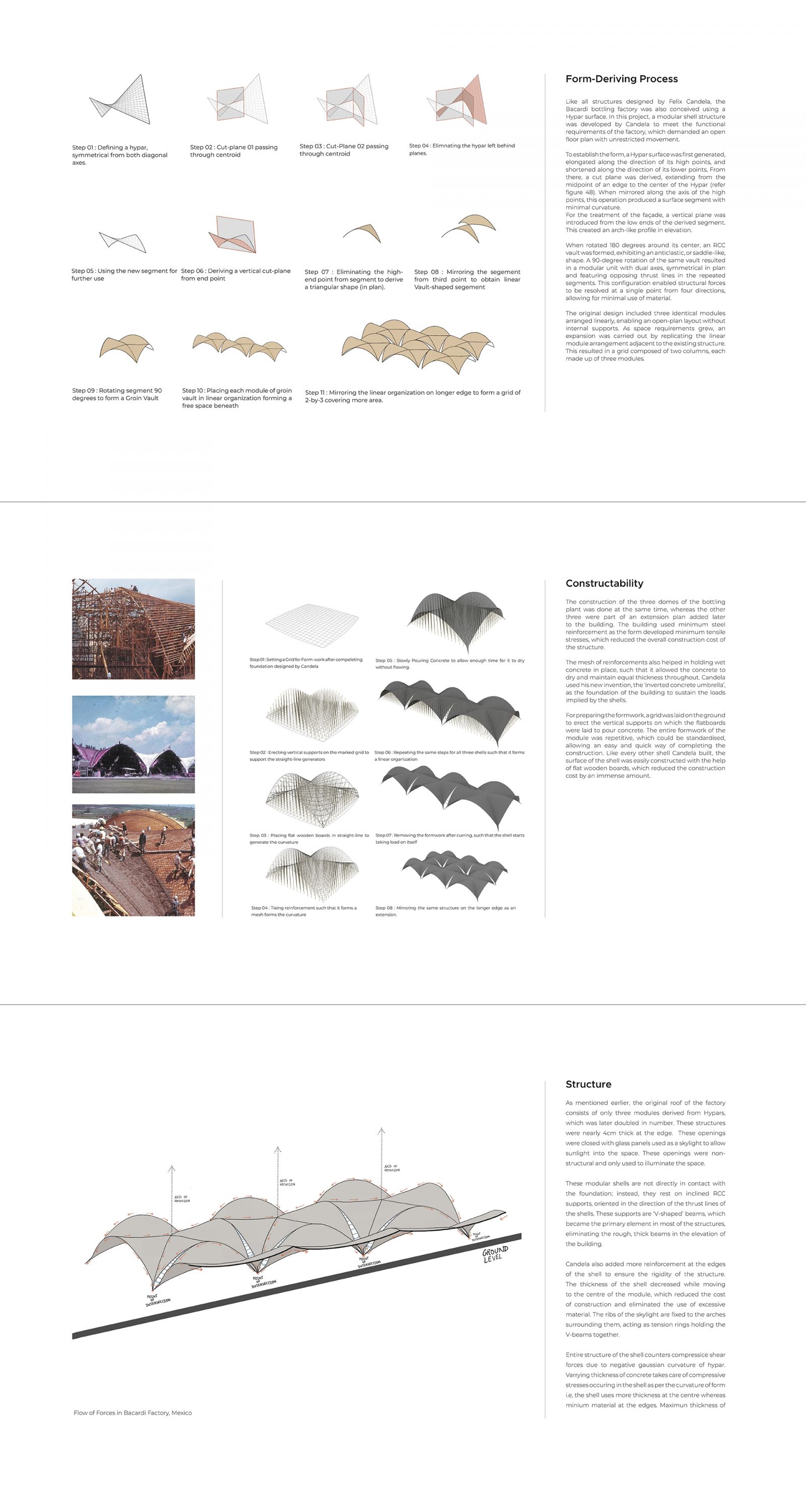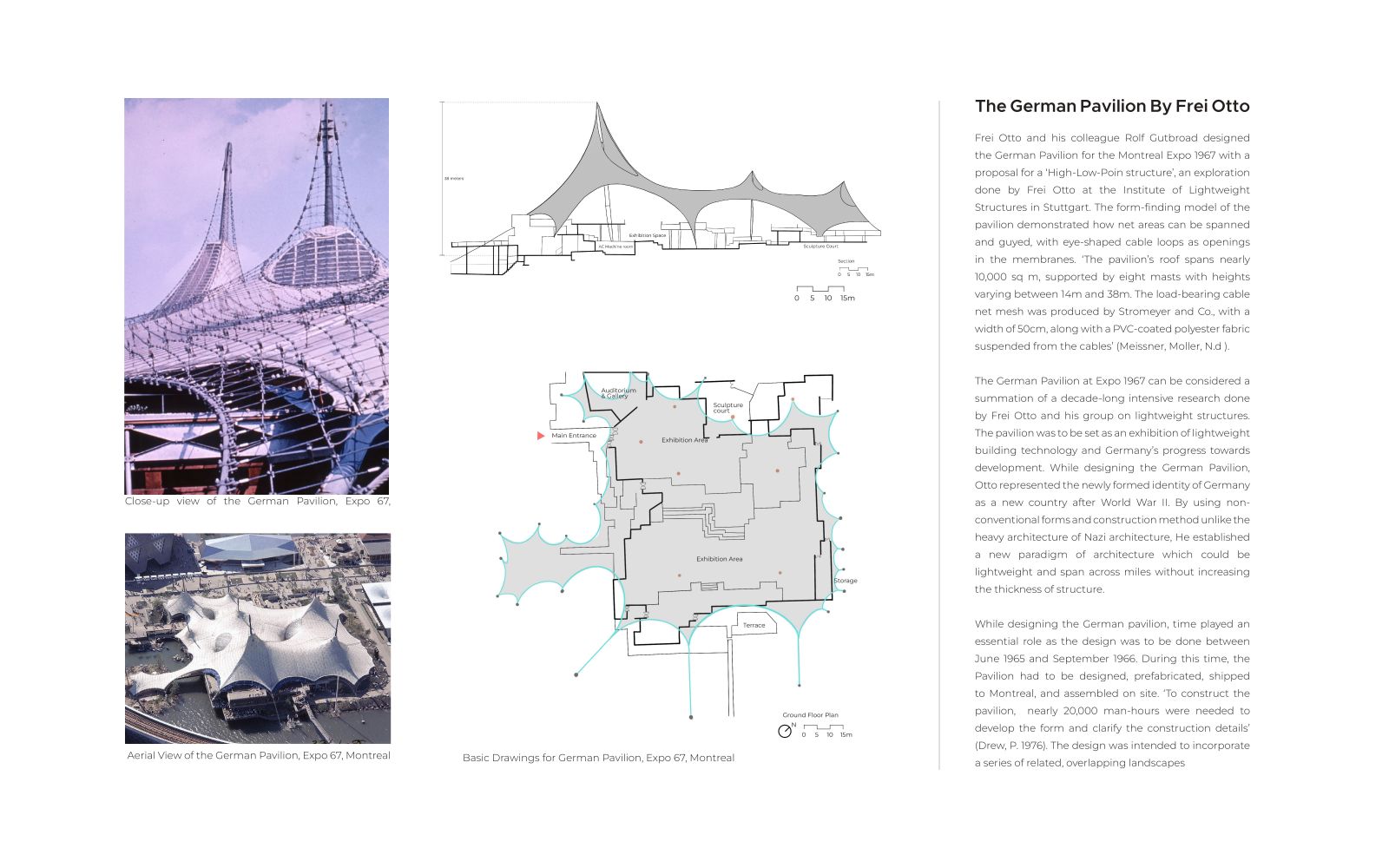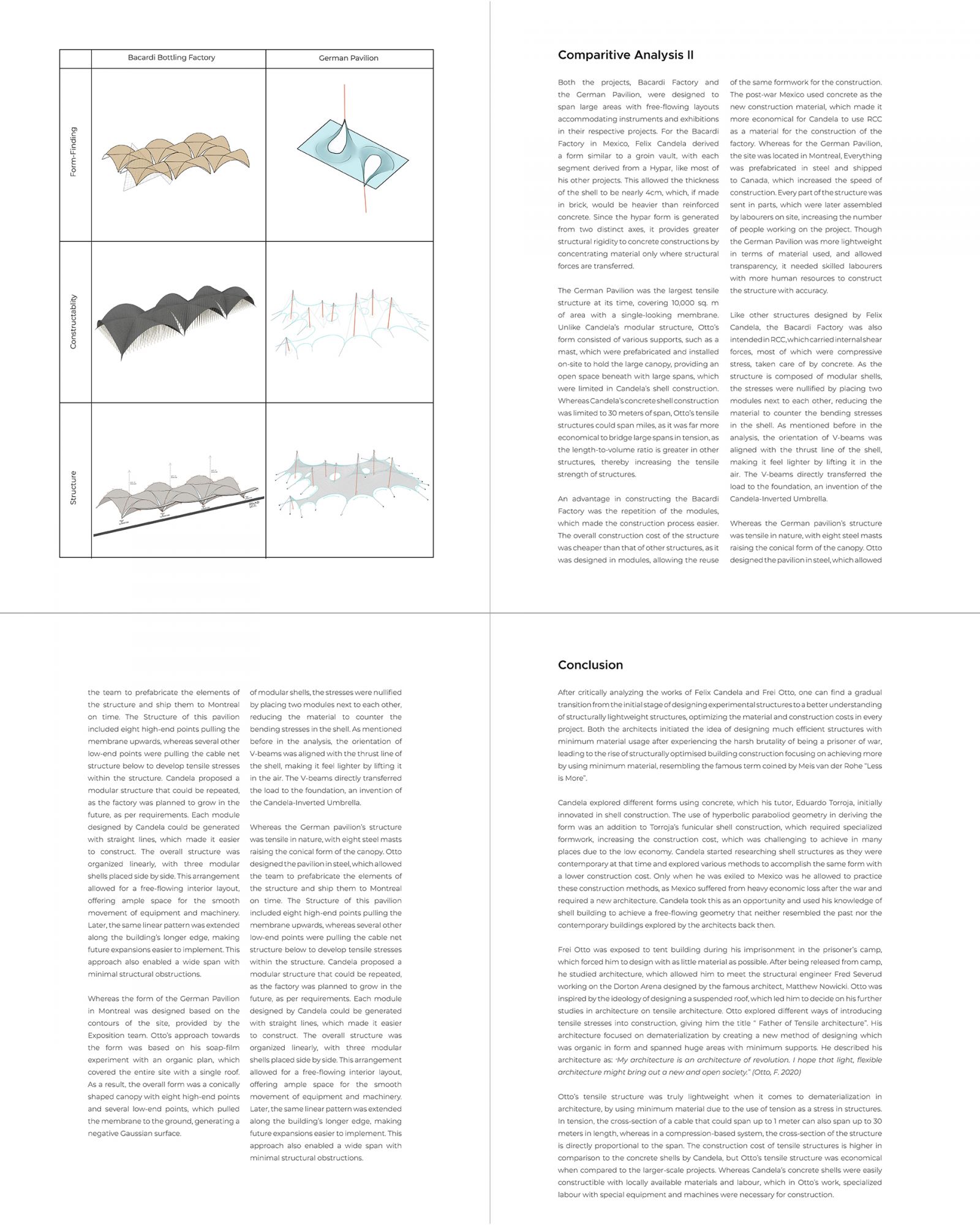Your browser is out-of-date!
For a richer surfing experience on our website, please update your browser. Update my browser now!
For a richer surfing experience on our website, please update your browser. Update my browser now!
The topic of this study deals with interpreting the use of various construction methods followed by the renowned architects, Frei Otto and Felix Candela, to achieve structurally efficient buildings after World War II. This research aims to understand different methods of form-finding, construction, and material explorations adapted by both architects to achieve structurally lightweight design ideas that consume comparatively less material. By analyzing the behavior of these surface active systems in two different structural systems (Otto’s Tensile System and Candela’s thin grid-shell system), the role of force distribution and dealing with stresses within different systems will be understood. Ultimately, this comparative analysis aims to illustrate the interplay of geometry, forces, and material efficiency can lead to innovative architectural designs that inspire future advancements in structural optimization even today. It will compare the construction and design methodologies of these two structural systems, Frei Otto’s membrane and cable-net structures, and Candela’s shell structures. Ultimately, this comparative analysis seeks to illustrate how the interplay of geometry, force, and material efficiency can lead to groundbreaking architectural achievements and inspire future advancements in structural optimization.
View Additional Work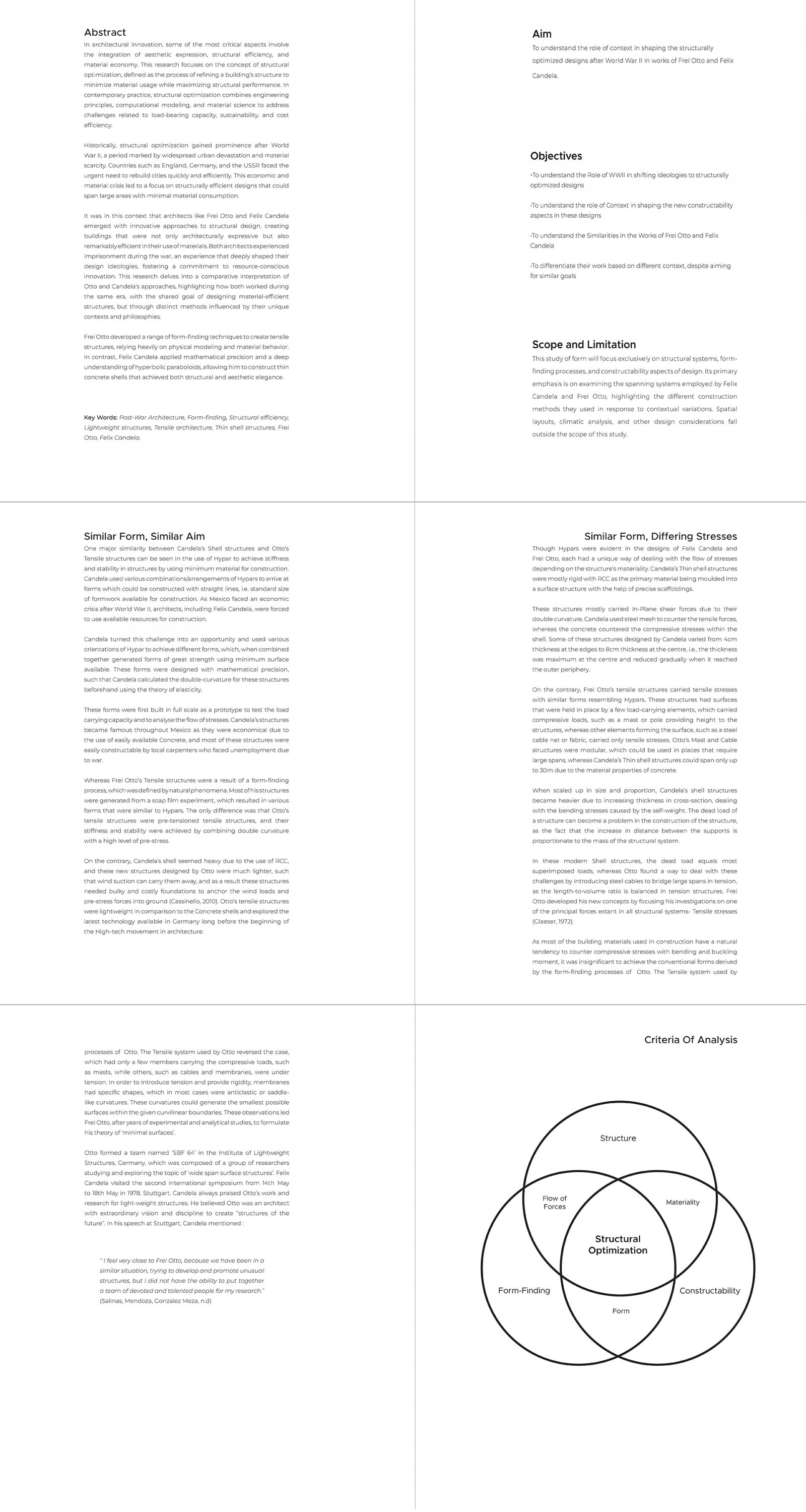
.jpg)
